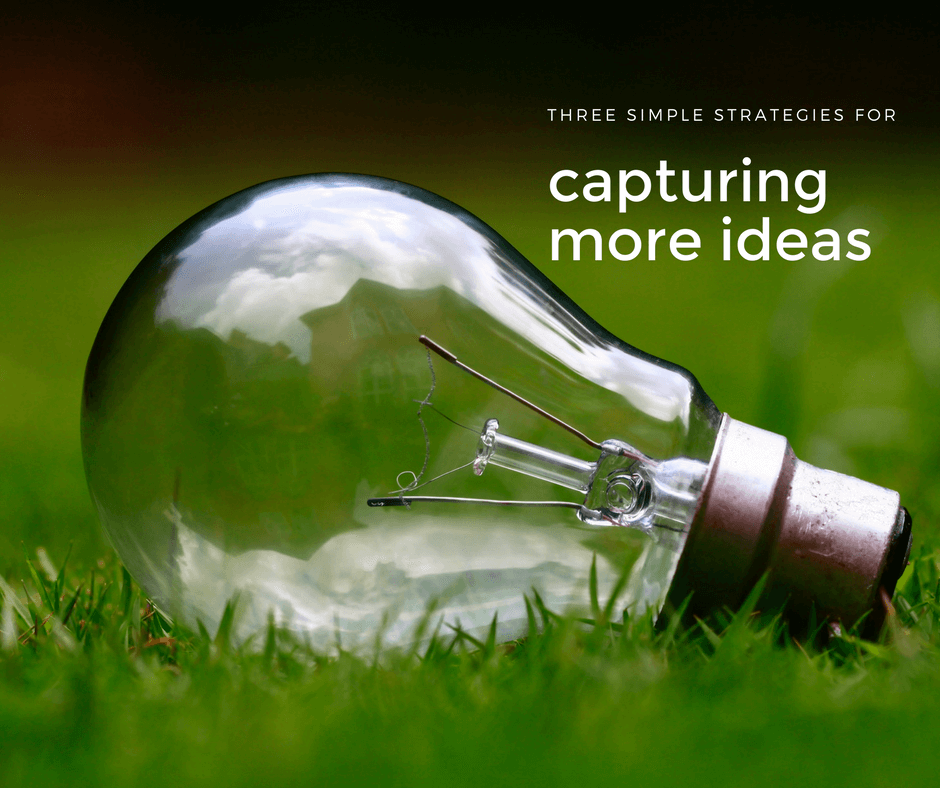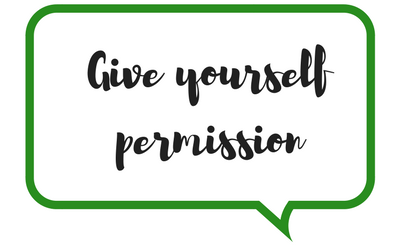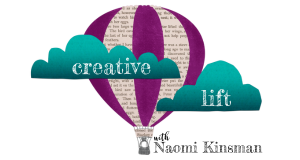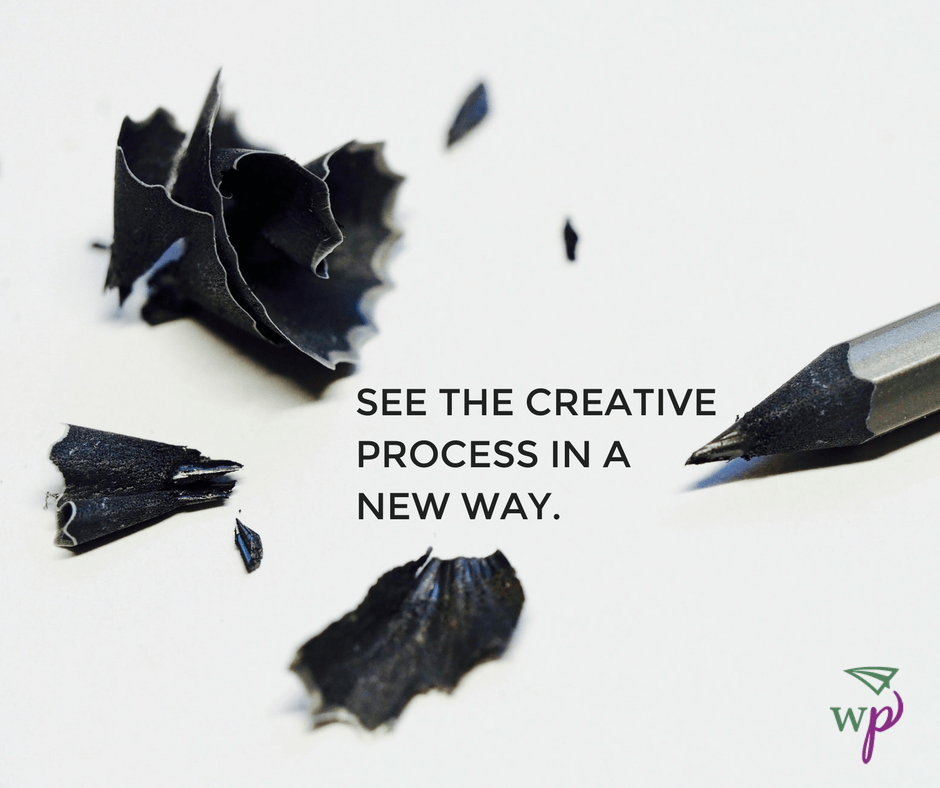Collecting Ideas: 10 Quotes to Fuel Your Creativity
The wide-awake way that children’s authors view the world that never fails to inspire me. Here’s a dose of wisdom to inspire, stretch and most importantly, motivate you to keep collecting ideas. Where are they? Tiptoeing around your world, whispering to you, inviting you to follow and explore.

“But the sensibility of the writer, whether fiction or poetry, comes from paying attention. I tell my students that writing doesn’t begin when you sit down to write. It’s a way of being in the world, and the essence of it is paying attention.”
— Julia Alvarez
“I often have trouble falling asleep at night, so when I’m lying in bed I think up stories. That’s where I do a lot of my thinking. I also get a lot of ideas while I’m reading – sometimes reading someone else’s stories will make me think of one of my own.”
— Linda Sue Park
“Sometimes you have to stop trying to force it, walk away and let your subconscious show you the way. Fill up on life for a while.”
— J. K. Rowling
“Artists need to fill themselves to overflowing and give it all back.”
— E. B. Lewis

“You can make up your own story when you look at a photo.”
— Brian Selznick
“The main thing to do is pay attention. Pay close attention to everything, notice what no one else notices. Then you’ll know what no one else knows, and that’s always useful.”
— Jeanne DuPrau
“We cannot stay home all our lives, we must present ourselves to the world and we must look upon it as an adventure.”
— Beatrix Potter
“Maybe we are all cabinets of wonders.”
— Brian Selznick
I know, I know, I said ten quotes on collecting ideas … but I couldn’t help myself. I added a few extra.
“Take a step, breathe in the world, give it out again in story, poem, song, art.”
— Jane Yolen
“The city is like poetry; it compresses all life, all races and breeds, into a small island and adds music and the accompaniment of internal engines.”
— E. B. White
Collecting ideas is one of the cornerstone habits in the Writerly Play Attic. Curious to know more? Writerly Play a story-based lens to help you individualize, map and problem-solve the creative process.
If you’ve ever found yourself stuck and unsure what to do next, or if you crave a more trustworthy process for bringing your ideas to life but don’t want to feel trapped by a one-size-fits-all solution, I hear you. I hand-crafted Writerly Play because I needed it, and my students needed it, and my peers needed it. You don’t have to stumble around in the fog when you’re bringing a new, beautiful creation to life.
Want to give it a try? The first step is figuring out your creativity style.
And hey, do you have any favorite quotes on collecting ideas? Maybe yours are from children’s authors, or from someone else entirely. Please share! Share in the comment section below, or share and tag me on Facebook or Twitter. I’m always collecting new inspiration. I hope you are, too!
Three Simple Strategies for Capturing More Ideas

You have thousands, probably millions of ideas, I know you do. The trick is capturing them and keeping them somewhere convenient.
Why do we lose ideas?
Consider the key hook by the front door. Until we install it, our keys drift all over the house, refusing to be found when it’s time to dash out on an errand.
A key hook is such a simple, inexpensive solution to an everyday problem, a problem that wastes tons of time and plunges us into a ferociously terrible funk. Unfortunately, this simple life-hack eludes many of us multiple times in our lives.
The solutions for lost ideas are similarly easy to implement. I’ve collected three for you in this post, but my hope is that you’ll create even more of your own, based on how your life works and where your ideas tend to show up.
Popcorn Catch-All
Ideas are likely popping into your mind all day. Choose a simple, trustworthy place to keep them. Where you choose to keep them isn’t nearly as important as the key point: You have to choose a spot and stick to it. Try somewhere on your phone such as in an Evernote notebook, Google Keep, Day One, or in a small notebook you carry with you. The more you use it, the more valuable your catch-all becomes. When you need an idea, you’ll have a growing list of them.
Story of the Day
Every day, tons of things happen. First, there are tiny interactions with family, colleagues and friends. Then, there are mini-experiences such as an excellent cup of coffee, a particularly beautiful sunrise or the surprise scent of jasmine when you’re out on a run. Finally, there are the major moments that surprise, frustrate or excite you. Capture these life moments–the small and the large–by writing down one story per day. You can write a sentence, a paragraph, or a whole page. You can use a photo to tell most of the story. No matter how you format it, be intentional about noticing what happens to you and keeping track. Over time, you’ll have a collection of moments that helped you learn and grow, and that you can use in many different ways.
Post-Conversation Brain Dump
Whether it’s a meeting, a coaching session, a mastermind group brainstorm or manuscript feedback from a friend, that conversation gave you at least one idea. Make the most of your interactions by taking a minute or two afterward to write down a few thoughts. Use a template to speed up the thinking process. And don’t let perfect be the enemy of the good. You might not remember every single question you want to follow up on, but if you capture even a portion of your insights, that’s a portion more than you’d have if you’d let the day speed past without jotting them down.
It’s not about the hook.
Maybe when I mentioned a key hook, you thought, “I don’t use a hook, I use a bowl.” (Or something else entirely.) Whether you use a bowl or a hook or a pegboard doesn’t matter. The point is noticing that you have a little problem that can be solved in a simple way.
No matter how you choose to capture your ideas, make sure that you DO capture them. Create a little system for yourself, and notice how it pays off. Do you already have a pretty fabulous idea system? I’d love to hear about it! Tell us in the comments below, or tag me and share your ideas on Facebook or Twitter.
NaNoWriMo Day One

Today’s session was quick because the day was full.
When I started on my revision of this draft, I realized that my plot needed:
a. more humor
b. a subplot to drive the twists and turns of the story, in a nod to my source material, Midsummer Night’s Dream
c. more backstory
Many of the scenes have remained, but have required significant rewrites. Other scenes have needed to be drafted from the ground up. I’ve been working through the story sequentially, smoothing and drafting as I go.
In the past week or so, I’ve struggled to make progress. I’ve reached a section of scenes that haven’t yet been written. Up to this point, I’d been in deep analysis mode, weighing each word, action, reaction and gesture. Or, in other words, I’ve been deep in my Writerly Play Workshop. When I’m in this mode, I tend to be analytical in everything I do, planning my week, working on other projects, even in the various decisions I make through the day.
Today, I gave myself permission to close that door and head into my Writerly Play Studio. I was drafting a new scene, and I thought I’d play around a little bit with my character’s entrance. Sometimes the best way for me to move into a playful space is to put on my director hat and pretend I’m directing a scene. How would I want my actor to play this moment out? Often, I end up with a much more physical (and often, funny) scene. That happened today, livening up the beginning of my new chapter and giving me a running start. I haven’t finished the chapter yet–it’s going to be a challenging one–but I’m in the right mental space. I count that a win!
Onward to day two.
My NaNoWriMo Plan

NaNoWriMo is one of my favorite challenges of the year. Participating feels like giving myself an early Christmas present, the gift of allowing myself to prioritize my writing.
However, with November right around the corner, I realize that if I dropped everything to draft a new novel, I’d only be adding more crazy to my creative life. I don’t need more drafts of new novels. I need to buckle down and finish the one I’m working on.
I’m in the messy middle, with a manuscript that I’m now revise-drafting.
I wonder how many other writers find themselves in this place? For me, revision requires identifying problems, brainstorming solutions, drafting scene possibilities, making thousands of choices, and all the while, smoothing and refining as I go.
I really do wish I could use the stage-by-stage wheel that I sometimes see in elementary classrooms, where writers move clothespins labeled with their names from step to step: idea generation, drafting and on to revision. However, once I enter the revision phase, I need to bounce back and forth into all of those modes of thinking.
Wild bouncing may seem to appeal to a creative mind like mine…
It certainly is what comes most naturally. In actuality, bouncing can clog up momentum’s wheels. If I try to draft when my brain is deep in sentence-by-sentence analysis mode, drafting a few paragraphs can take hours. It truly does matter what I set out to do when I start a writing session, particularly when time is of the essence. Structure is absolutely needed, and yet, too much structure, and my creativity hides under the table. This conundrum–the need for structure that doesn’t suffocate–is the root of Writerly Play, the need that drove me to develop a model for mapping the creative process in the first place.
I’ve been doing a lot of research on the brain science of creativity, and have also spent a lot of time applying Writerly Play as a tool to help my students move forward with their projects. However, I’ve never documented how I use Writerly Play in my own revision process day-to-day. Aha! An opportunity to learn gain new insight.
Tomorrow, it will be November.
If you’re a writer (and in my opinion, we all have stories to tell, but that’s another topic for another day) I hope you’ve given yourself permission to prioritize your writing this month. Thousands of people participate, so you’ll be in good company. All you have to say is, “It’s NaNoWriMo, I’m writing,” and most people will understand why you need an hour or two a day to camp out in your favorite writing space. If they’ve never heard of NaNoWriMo, you can send them to NaNo’s website, and nine times out of ten, they’ll be amazed and impressed and ready to cheer you on.
I’ll be revising my draft, which will likely involve drafting 20,000 new words, and will surely involve dealing with the 60,000 words that I already have. I’m using the last day of the month as a firm deadline. On November 30, I will send my manuscript out to beta readers for feedback. No excuses.
As you can imagine, I’ll be a little busy this month, so you won’t see posts like the ones I normally write. However, I will post on the blog throughout the month about how I’m using Writerly Play as I revise. I’m curious to map a project in real time. I know I’ll learn a lot about how I think and create, and I can’t wait to look over the project at the end and see what insights I gain that might be helpful for others, too.
Ready? Let’s go write!


